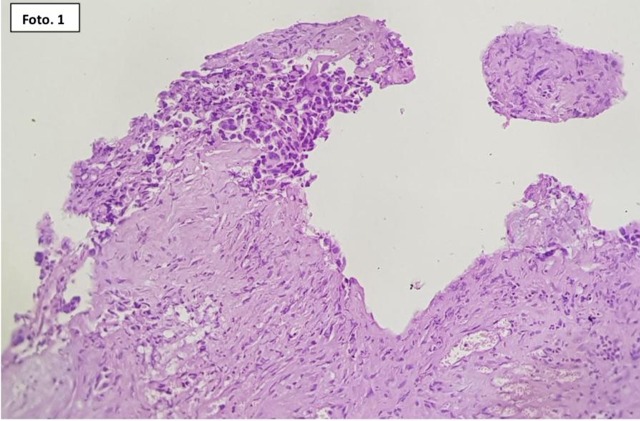Tuesday Poster Session
Category: Colon
P4601 - Rectovaginal Fistula Unmasking Poorly Differentiated Rectal Cancer in a 33-Year-Old Woman From Patulul, Guatemala: A Call for Youth-Oriented Screening

Isidro Pérez Coché, MD, MSc (he/him/his)
Hospital Nacional de Uspantán, Quiché, Guatemala C.A.
Guatemala, Solola, Guatemala
Presenting Author(s)
1Hospital Nacional de Uspantán, Quiché, Guatemala C.A., Guatemala, Solola, Guatemala; 2Universidad San Carlos de Guatemala, Retaluleu, Retalhuleu, Guatemala; 3Universidad de San Carlos de Guatemala, Uspantan, Quiche, Guatemala; 4Universidad San Carlos de Guatemala, Salcaja, Quetzaltenango, Guatemala; 5Johns Hopkins Bloomberg School of Public Health, San Bernardino, CA
Introduction: Although Guatemala registered only ~900 new colorectal cancer (CRC) cases in 2022—7ᵗʰ among national malignancies—it remains the country’s deadliest gastrointestinal tumor, largely because >60 % present at stage III/IV and < 3 % of adults have ever been screened. CRC in Guatemalan women under 40 is rarely reported; most published cases involve older urban patients. Documenting rural, early-age disease can refine incidence estimates and guide equity-focused prevention. We describe a rectal carcinoma manifested by a rectovaginal fistula in a 33-year-old woman from the Pacific lowlands to highlight diagnostic challenges and the need for youth-inclusive screening.
Case Description/
Methods:
A 33-year-old woman Patulul (Suchitepéquez) presented with one year of feculent vaginal discharge and progressive pelvic pain. She had no family history of cancer. Physical examination revealed cachexia and a friable mass protruding through the posterior vaginal wall; digital rectal exam was impossible owing to pain. Colonoscopy demonstrated an exophytic rectal lesion completely occluding the lumen at 6 cm from the anal verge. Biopsy showed poorly differentiated adenocarcinoma. CT ruled out distant metastases but confirmed tumor invasion into the vaginal septum. Because obstruction precluded neoadjuvant therapy, surgeons fashioned a diverting end colostomy and referred her to the National Cancer Institute in Guatemala City (~115 km away) for chemoradiation.
Discussion:
This case illustrates how structural inequities allow colorectal cancer to progress to devastating complications in Guatemala’s rural populations. Presenting at 33 years—nearly two decades younger than the recommended national screening age—our patient experienced a twelve-month delay from fistula onset to diagnosis, driven by poverty, limited oncologic services in the Pacific lowlands, and language barriers. By the time she reached specialist care, tumor invasion into the rectovaginal septum precluded sphincter-preserving surgery and necessitated a diverting colostomy, profoundly affecting body image, fertility, and social roles in a culture where stomas are highly stigmatized. A low-cost FIT program integrated into primary health posts, coupled with mobile colonoscopy brigades and travel vouchers, could intercept tumors before fistulization. Moreover, youth-oriented educational campaigns—in Spanish and local Mayan languages—are essential to reduce symptom misattribution to hemorrhoids or gynecologic disease.
Figure: H&E section revealing nests of large tumour cells with irregular nuclear contours, hyperchromatic chromatin, prominent nuclei, and abundant eosinophilic cytoplasm—features of poorly differentiated adenocarcinoma.
Disclosures:
Isidro Pérez coché indicated no relevant financial relationships.
Duglas Geovanny Ramos Gómez indicated no relevant financial relationships.
Olcar Jhony López Santos indicated no relevant financial relationships.
Ricardo Antonio Ovalle indicated no relevant financial relationships.
Bernardo Donery López Samayoa indicated no relevant financial relationships.
Isidro Pérez coché, MD, MSc1, Duglas Geovanny Ramos Gómez, MD2, Olcar Jhony López Santos, MS3, Ricardo Antonio Ovalle, MS4, Bernardo Donery López Samayoa, MD, MPH5. P4601 - Rectovaginal Fistula Unmasking Poorly Differentiated Rectal Cancer in a 33-Year-Old Woman From Patulul, Guatemala: A Call for Youth-Oriented Screening, ACG 2025 Annual Scientific Meeting Abstracts. Phoenix, AZ: American College of Gastroenterology.
